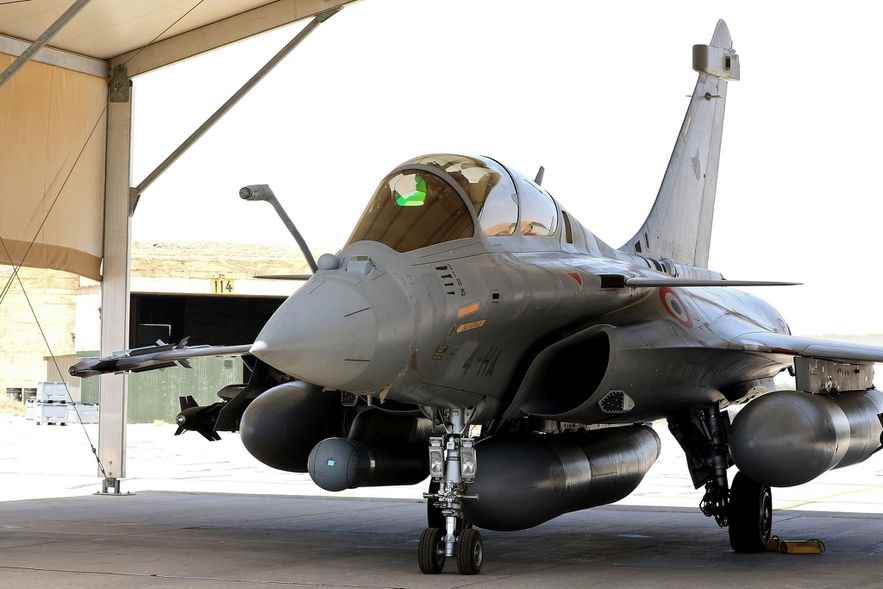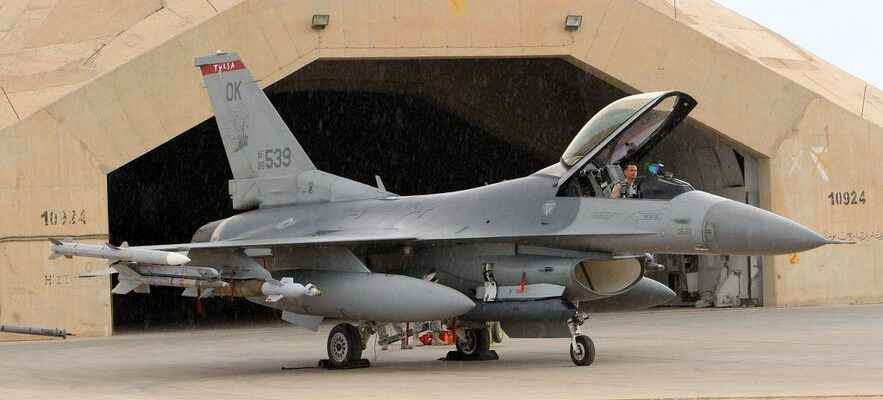Should fighter jets be delivered to Ukraine? After the long debate – marked by German hesitation – on the delivery of Leopard 2 heavy tanks, several American and European officials believe that kyiv’s request for American F-16s should also be granted. The Netherlands have taken a position in favor of this hypothesis, which does not enjoy consensus. A former fighter pilot deployed in Bosnia-Herzegovina with the United Nations Protection Force (UNPROFOR), who later became General of the Air Force, Jean-Paul Paloméros, who also held the position of Chief of Staff of the Air Force from 2009 to 2012, weighs the pros and cons.
It is well placed to respond to The Express : within NATO, he supervised, from 2012 to 2015, the military modernization of the Atlantic Alliance at the head of the Allied Command Transformation. “You have to call a spade a spade,” he says, pointing out that the delivery of combat aircraft is a cut above the delivery of heavy tanks. With consequences that must be weighed coldly.
An F-16 on an Iraqi base (west of Baghdad), November 1, 2011
© / afp.com/Ali al-Saadi
L’Express: Should planes be given to Ukraine to help it defend itself?
Planes such as the American F-16s or the French Mirage 2000s would obviously constitute extraordinary added value for Ukraine. This would allow him to increase his efficiency. But the more fundamental question is: what would such devices be used for? These planes could block Ukrainian airspace and attack the Russian air force which, in the Donbass, supports its soldiers by air. Moreover, they could remotely attack Russian positions in the Crimea, on the Black Sea or, even, in Russia, thanks to laser-guided bombs. Another option: to penetrate at low altitude into enemy territory to strike in depth the Russian missile batteries which fire on Ukrainian civilians.
What could be the political consequences of such deliveries?
Of course, you have to think about all aspects. Are we at the stage, or not, where we think this could change the nature of the relationship between Russia and the West? In other words: are we afraid of Vladimir Putin’s reaction? To tell the truth, it could hardly do worse than what it is doing today… The question of Western aircraft is more complex than that of tanks because, as I said and unlike tracked armor, such aircraft – do not lie to each other – could easily penetrate into Russian territory.
Another question: how would these devices be transported and delivered to Ukraine? If they take off from a NATO country (for example Poland) to land in Ukraine, Moscow could argue that they are NATO planes. Therefore, Putin would claim that NATO is attacking Russia. There is a political dimension to this affair.
Would it be an “escalation” in the war, as some fear?
You have to call a spade a spade: the planes demanded by Volodymyr Zelensky and his army chief Valeri Zaloujny would have maximum effectiveness if they were used to strike, at the source of the problem, the opponent’s device, at home, in order to to neutralize its missiles and air force.
Could long-range missiles “do the job” instead of planes?
To my knowledge, the stock of such devices is quite limited. It is true that the Americans have ATACMS surface-to-surface missiles which can fly 300 kilometers and therefore strike in depth. I do not know the state of the American stocks but what is certain is that for the moment President Biden has refused to supply this type of armament. As for the Europeans, they have nothing comparable in terms of surface-to-surface missiles. In France, the major asset of our artillery is the CAESAR cannon (acronym for “truck equipped with an artillery system”) whose maximum range is approximately 50 to 70 kilometers. France has also delivered unit rocket launchers (LRU) which carry 70 kilometers.
What does Ukrainian airspace look like now?
For now, the air war is not the most salient feature of the conflict, which is quite surprising from Russia. The operations are especially marked by the combats of artillery and infantry. The Russians, however, carry out aerial sorties, either to drop bombs on energy production and distribution centers, or to support their troops on the ground by flying at low altitude. In the latter case, their aircraft are vulnerable to Ukrainian anti-aircraft defense – which is why they limit their exits. For its part, the Ukrainian air force flew above Kherson, but not or little in the Donbass. The truth is that we lack information because the belligerents do not communicate on the subject. Air activity is a well-kept secret for the two belligerents.
What are the qualities of the American F-16?
It is an aircraft that has known several versions. We are in the fourth generation. This device has proven itself in Iraq and Libya. Thanks to its “laser designation pods” fixed under its wings, it can designate, then strike, a target with very high precision.

A Rafale fighter jet at a military base in Jordan, July 18, 2017
© / afp.com/Khalil MAZRAAWI
What does the F-16 compare to?
It belongs to the same generation as the French Mirage-2000. The Mirage 2000 D was designed for ground attack. It can carry a Scalp cruise missile or even modular air-to-ground armaments, real propelled bombs whose military load is modular and which can be fired from a safe distance with great precision.
Do you understand those who fear the Russian reaction if the West delivers F-16s?
During this war with an unpredictable scenario, each time significant new equipment is delivered by the Allies to Ukraine, it goes through a long sequence of debates between the Ukrainians – who express their operational needs – and the donor countries. Of course afterwards, it is easy to argue that we should have decided sooner. This process is understandable: it is essential that all parties involved – Ukrainian government, donor countries, Western strategists – measure all the consequences of their choice before reaching an agreement. It is essential that everyone is on the same line.
Let’s put aside the question of planes and tanks. How could the West help Ukraine?
We must continue to provide ammunition. And it shouldn’t be too late. Ukrainian stocks are constantly decreasing. However, artillery and ground-to-air defense are currently the key to the conflict. The war has been going on for a year and, inevitably, the two armies are exhausted. I read somewhere that Ukraine fires twice as many shells as its allies can provide.
We are in a war of attrition in every sense of the word: there are more and more deaths, the number of destroyed materials increases constantly and the ammunition is consumed at a considerable rate. It is not known how the production of Russian armaments and ammunition operates. But the US defense industry is back to full steam ahead. This is one of the keys to the conflict. In all wars, the role of industry is crucial.
What would you do if you were at the head of the Ukrainian command?
Some terms of the equation escape me. We don’t know, for example, what the true state of the Ukrainian army is. Only the Ukrainian general in chief, Valeri Zalouzhny knows it. Moreover, it seems that the Russian mobilization is beginning to bear fruit: at the current stage, all the Russian mobilized who survived the fight have become seasoned soldiers. When I listen to President Volodomyr Zelensky’s statements, I sense an urgency in him. He knows that time is on Russia’s side. He knows he has to keep the tempo, the momentum. He also knows he has to move on. But if it was possible, he would have done it already. No doubt he is preparing a counter-offensive, but asking himself two questions. Where should the Russian enemy be attacked? And when should the reserves of unmobilized men be engaged? Throughout history, the great military leaders are often those who knew how to mobilize their reserve force in the place and at the right time.
